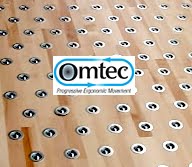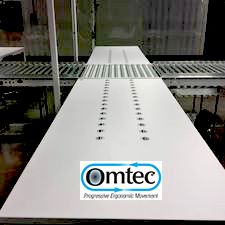Your cart is currently empty!
A Comprehensive Guide to Choosing the Right Ball Transfer Unit for Your Application

Introduction: Ball transfer units are versatile components used in various industries for facilitating smooth and efficient material handling. Whether you're designing a conveyor system, assembly line, or any other application requiring precise movement of goods, selecting the appropriate ball transfer unit is crucial for optimal performance and longevity. In this comprehensive guide, we'll delve into the key factors to consider when choosing the right ball transfer unit for your specific application. Understanding Ball Transfer Units: Before diving into the selection process, it's essential to have a basic understanding of ball transfer units. These units consist of a large number of small, freely rotating balls enclosed within a housing. They are typically mounted on a base or housing, allowing for multidirectional movement of objects with minimal friction. Ball transfer units come in various sizes, load capacities, materials, and configurations to suit different applications. Factors to Consider: Load Capacity: One of the primary considerations when selecting ball transfer units is the anticipated load capacity. It's crucial to determine the maximum weight that the units will need to support to ensure they can handle the intended workload without failure. Exceeding the load capacity can lead to premature wear and decreased performance. Be sure to account for both static and dynamic loads, as well as any potential impact or shock loads that may occur during operation. Size and Configuration: Ball transfer units are available in a range of sizes and configurations to accommodate different load requirements and mounting arrangements. Consider the dimensions of the objects being transferred and the available space for mounting the units. Additionally, choose between fixed-mount, stud-mount, or flange-mount units based on your specific application needs. Ball Material: The material composition of the balls in ball transfer units plays a significant role in their performance and durability. Common materials include steel, stainless steel, and nylon. Steel balls are suitable for heavy-duty applications and high-temperature environments but may rust over time if exposed to moisture. Stainless steel balls offer excellent corrosion resistance and are ideal for wet or corrosive environments. Nylon balls are lightweight and non-corrosive, making them suitable for lighter loads and cleanroom environments. Environment and Conditions: Consider the operating environment and conditions in which the ball transfer units will be used. Factors such as temperature, moisture, dust, chemicals, and vibration can affect the performance and lifespan of the units. Choose units with appropriate seals or coatings to protect against environmental hazards and ensure reliable operation in challenging conditions. Mounting Options: The mounting method of ball transfer units can vary depending on the application requirements. Determine whether you need fixed-mount units for permanent installation or stud-mount units for removable or adjustable mounting. Additionally, consider the orientation and spacing of the units to achieve optimal load distribution and smooth movement of objects. Maintenance Requirements: Evaluate the maintenance requirements of the ball transfer units, including cleaning, lubrication, and replacement of worn components. Choose units with easy access to lubrication points and replaceable parts to simplify maintenance tasks and minimize downtime. Regular maintenance is essential for ensuring smooth operation and extending the lifespan of the units. Cost and Value: While cost is undoubtedly a factor to consider, it's essential to prioritize value over price when selecting ball transfer units. Investing in high-quality units that meet your specific requirements and offer long-term reliability can save you time and money in the long run by reducing maintenance costs, downtime, and the risk of equipment failure. Conclusion: Choosing the right ball transfer unit for your application requires careful consideration of various factors, including load capacity, size, configuration, ball material, environment, mounting options, maintenance requirements, and cost. By taking the time to evaluate these factors and selecting units that align with your specific needs and operating conditions, you can ensure smooth and efficient material handling operations while maximizing the lifespan and performance of your equipment.



